10 Food Terms to Know NOW (PHOTOS)
There's no doubt that culinary culture is having a moment. Expanding your foodie knowledge will make those steep prices at no-reservation hotspots worth the hours-long waits. Avoid menu mishaps by familiarizing yourself with these commonly misunderstood food items.

1. Pan Roasted
While delicious, pan roasted is not the healthier option you might think. Generally, pan roasting means cooking meat or fish in fat, and continually basting it. If you're looking for a lighter option, stick with a grilled protein.
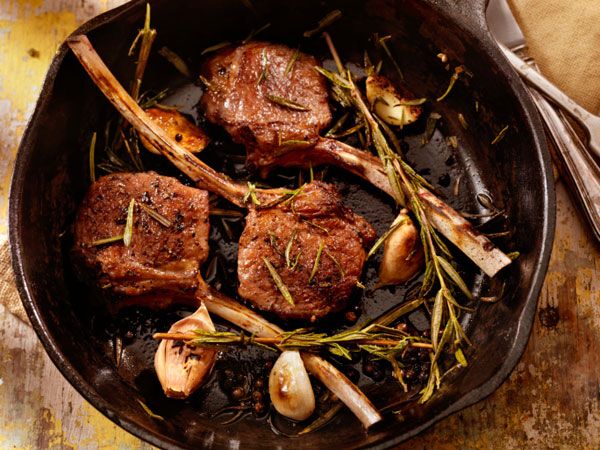
2. Confit
While the French word confit simply means "preserved," the culinary term refers to cooking meat, vegetables or fruit at a relatively low heat in either fat (meat and vegetables) or concentrated sugar syrup (fruit.) If a menu lists meat (usually duck) served confit, it means that it's been cooked in its own fat, rendering it unbelievably tender. Vegetables confit are prepared in oil, while fruits confit are cooked in a very thick sugar syrup.
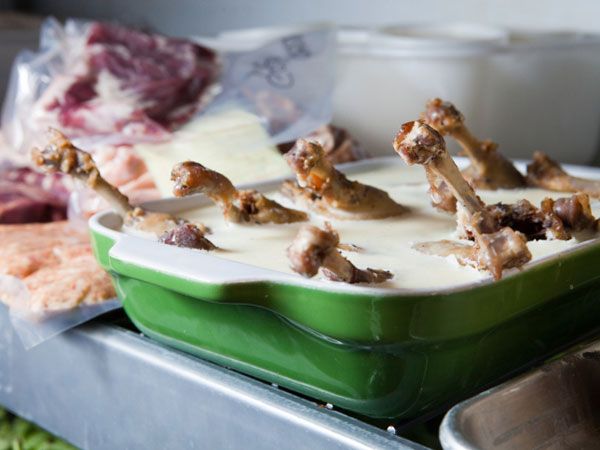
3. Lardo vs Lardons
These two words, of Italian and French origin respectively, both refer to pork fat, but in slightly different preparations. Lardo is thinly sliced pork fat served as one would salami, or sometimes whipped into a thick spread (sort of like páté, but without any actual meat.) Lardons are small strips of pork fat more of the bacon variety, and often come in French frisée salads alongside fried eggs. Extra tip: the Italian version of lardon is pancetta.
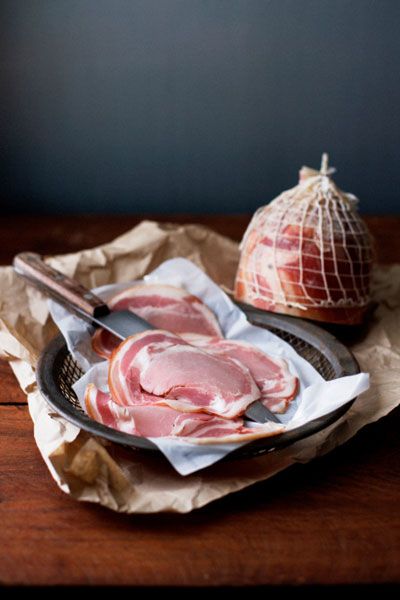
4. Tartare vs Carpaccio vs Crudo
While these terms all refer to raw meat or fish, they have rather different preparations. A tartare is generally presented as a small mound of cubed meat or fish, frequently accompanied by a sauce (steak tartare being the most famous, but tuna and salmon are also common). Carpaccio, often made from beef, veal or tuna, is very thinly sliced then pounded paper-thin. Crudo, in Italian and Spanish, simply means "raw," so the preparations vary. Crudo often refers to fish served in thin slices similar to sashimi.
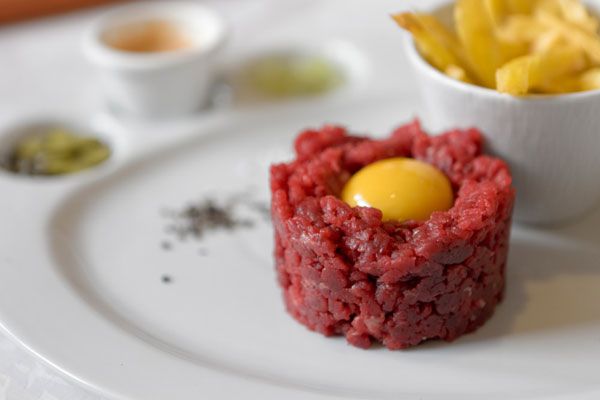
5. Farro
Of late, this ingredient has been popping up on all manner of menus, from Italian to farm-to-table American. Farro is a wheat grain with a slightly earthy taste and hearty, chewy texture similar to wild rice. It often serves as the base for grain salads featuring vegetables and herbs.
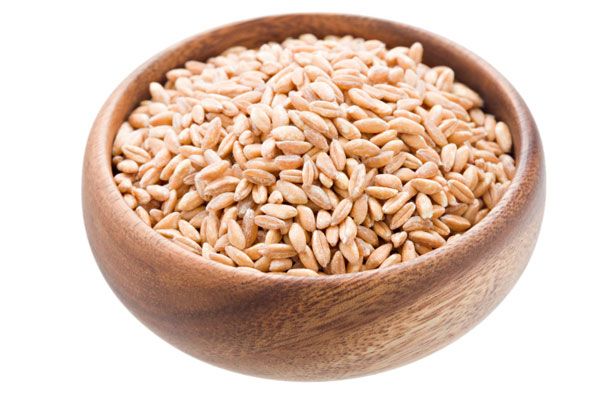
6. Reduction / Gastrique
Consider these more fancy names for "sauce." Chances are, if you've had a dish with an artful drizzle of very flavorful sauce, you've had a reduction or gastrique. A reduction occurs when a liquid is boiled down, therefore thickening the consistency and intensifying the flavor. A gastrique is a form of reduction, but the liquid is always a combination of vinegar and sugar. The sticky sweet/sour sauce is then infused with a different flavor, which can be almost anything, often including citrus, liquor, onions, or herbs.
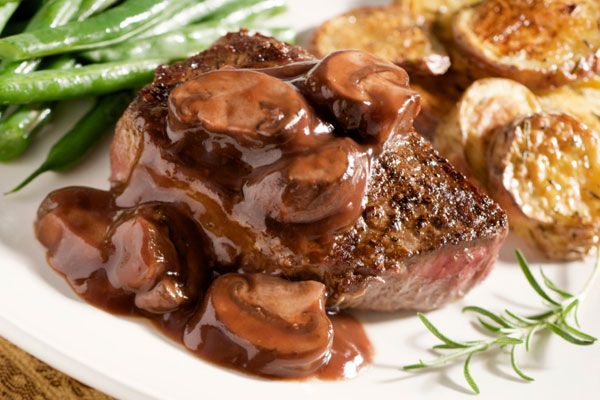
7. Tostones / Tostadas
While these two words sound familiar, their only similarity is that they are both fried snacks. Tostones, a common Latin American snack, are crunchy slices of plantain, a large banana-like fruit that is mostly consumed cooked. Tostada literally means "toast," and in Mexican cuisine it consists of a fried crispy tortilla topped with other ingredients—like a flat, inside-out taco.
Stay In The Know
Get exclusive access to fashion and beauty trends, hot-off-the-press celebrity news, and more.
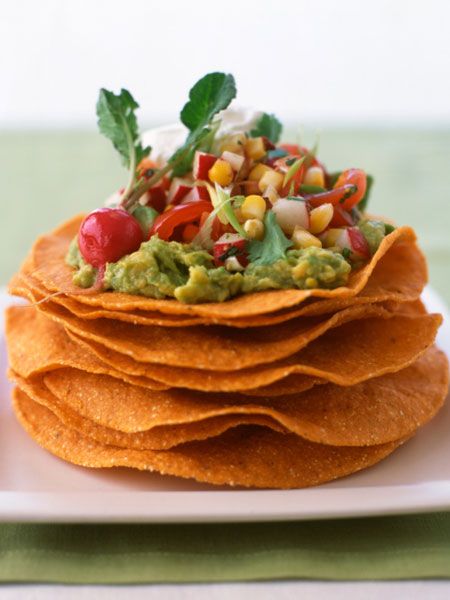
8. Burrata vs Fresh Mozzarella
We're all familiar with the water packed fresh Mozzarella you can get at many stores. Burrata, a fresh Italian cheese that has seen immense popularity in the last 5 years, is made from mozzarella and cream. The outside of the cheese is solid, but the inside is very soft and creamy—almost liquid.
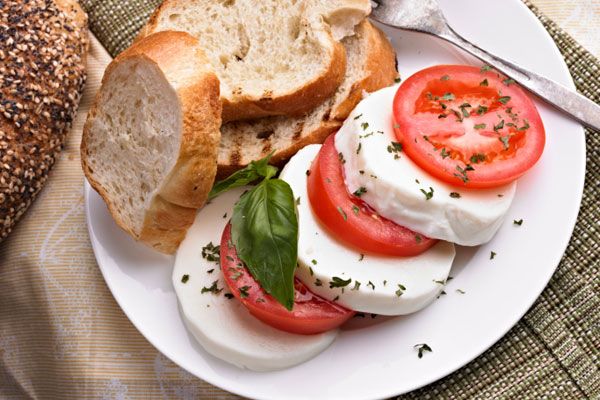
9. Sweetbreads
Though this word may conjure visions of pastries, sweetbreads actually refer to certain prepared internal organs of animals. Sweetbreads often come from the lamb or calf, and include organs in the throat and/or stomach region. They are considered a delicacy in many cuisines.
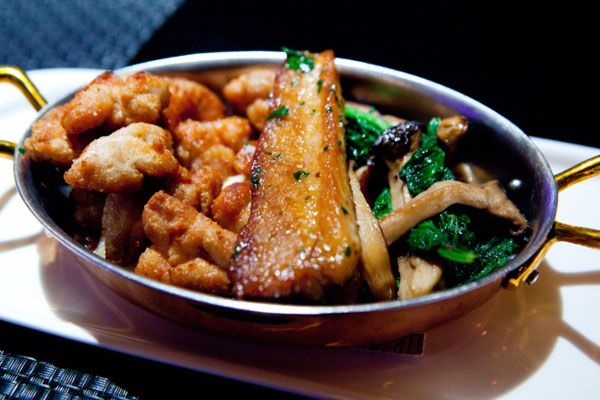
10. Crostini / Bruschetta
These two Italian bread-based appetizers are virtually indistinguishable, except for two things: firstly, crostini are served on small slices of bread (baguette style) whereas bruschetta are served on larger slices on bread (think a country loaf.) Secondly, bruschetta are often rubbed with garlic after toasting, but crostini are not. Both are toasted then topped (or served alongside) various dips, spreads, cheeses or meats.
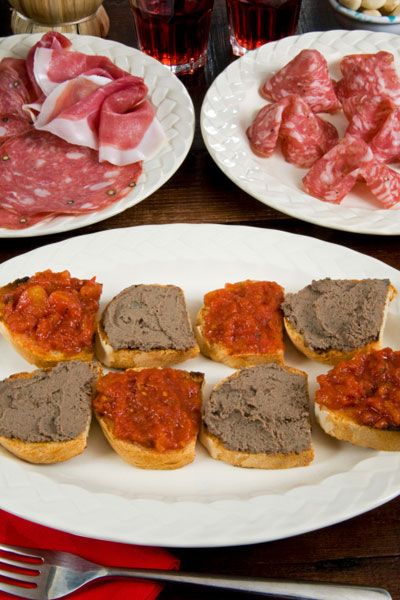
-
 The 'You' Season 5 Cast Features People From Joe's Past, a New Love Interest, Madcap Twins, and More
The 'You' Season 5 Cast Features People From Joe's Past, a New Love Interest, Madcap Twins, and MoreHere's what to know about the star-studded final installment of the Netflix hit.
By Quinci LeGardye
-
 These J.Crew Sale Finds Basically Packed My Suitcase for Me
These J.Crew Sale Finds Basically Packed My Suitcase for MeI'm ready for my next vacation.
By Brooke Knappenberger
-
 Summer's Sportiest Shoe Trend Is Worth Shopping More Than Once
Summer's Sportiest Shoe Trend Is Worth Shopping More Than Once17 pairs from Nordstrom, Mango, and Zara I'm shopping now.
By Julia Marzovilla
-
 Could Chasing Happiness Actually Be Making Me Unhappy?
Could Chasing Happiness Actually Be Making Me Unhappy?If you’re only pursuing happiness, you’re doing it wrong.
By Samantha Boardman
-
The Easy Way To Add More Time To Your Morning
Because we can all use an extra 15 minutes.
By Hannah Miller
-
 Every McDonald’s Touchscreen In a Study Tested Positive For Fecal Bacteria
Every McDonald’s Touchscreen In a Study Tested Positive For Fecal BacteriaI'm hatin' it.
By Tess Koman
-
 The New IHOP Logo Looks Like a Tampon Ad and People Are Into It
The New IHOP Logo Looks Like a Tampon Ad and People Are Into ItOne chain’s PR flub is another company’s PR opportunity.
By Cady Drell
-
 How I Came to Love My Body—a Decade After My Eating Disorder
How I Came to Love My Body—a Decade After My Eating DisorderCaroline Rothstein suffered her whole life. Then she chose to recover.
By Caroline Rothstein
-
 What These 6 Food Cravings Tell You About Your Health
What These 6 Food Cravings Tell You About Your Health"Help us." —your organs
By Chelsea Peng
-
How to Get FREE Birth Control NOW
How To Under Obamacare, the full range of FDA-approved prescription birth control methods must be covered by every insurance plan, and without a co-pay.
By Maura Brannigan
-
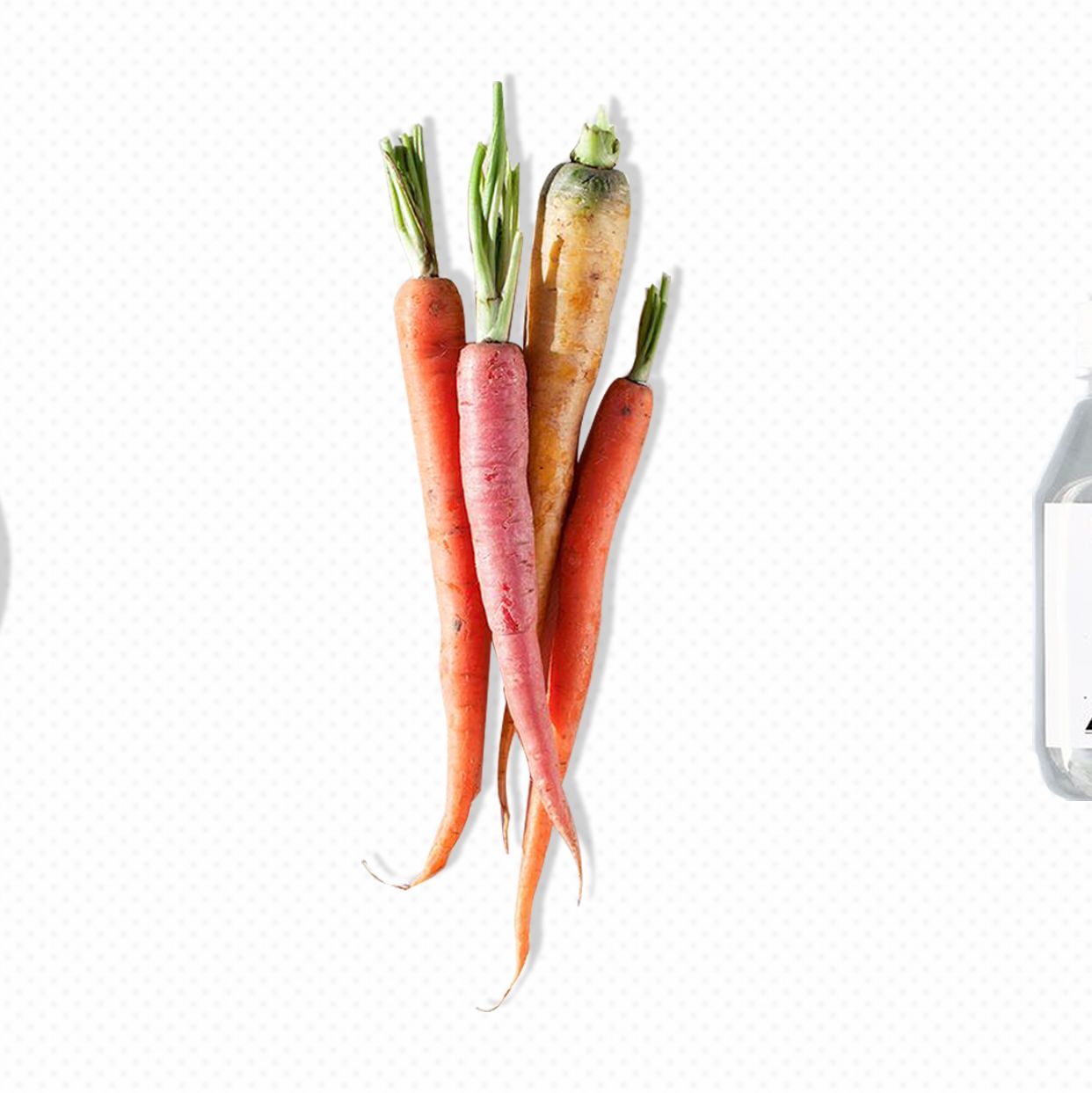 The Truth Behind All Those Gut Health Claims
The Truth Behind All Those Gut Health ClaimsHow To No alternative facts here.
By Alexandra Engler